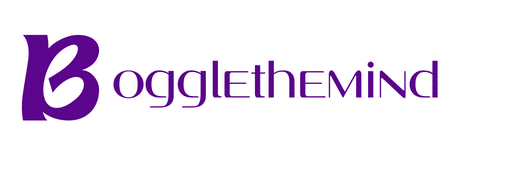What are the latest trends in eco-friendly and sustainable home insulation materials?

In the world of home construction and design, a significant shift is taking place. As homeowners become increasingly conscious of their carbon footprint, they are looking for ways to build homes that are both energy efficient and environmentally friendly. Insulation is one of the key aspects of this green construction. High-quality insulation can dramatically improve a home’s energy efficiency, reducing its reliance on fossil fuels for heating and cooling. Today, we’ll delve into the latest trends in eco-friendly and sustainable home insulation materials.
Renewable and Recycled Materials
One of the primary trends in eco-friendly home insulation involves the use of renewable and recycled materials. Traditionally, insulation has been made from fiberglass or mineral wool, both of which can have harmful environmental impacts. Today, however, a wide variety of alternative materials are available.
Dans le meme genre : What Are the Best Techniques for Crafting a Custom Walkway with Pavers and Landscaping?
Many of these options are made from recycled materials, minimizing waste and helping to reduce the need for new resource extraction. For example, cellulose insulation is made from recycled newspaper and cardboard, while insulation made from recycled denim uses discarded jeans to create a highly effective and eco-friendly insulating material.
In addition to recycled materials, many companies are now producing insulation from renewable resources. For example, insulation made from sheep’s wool or straw is becoming increasingly popular. These materials are not only renewable but also biodegradable, making them a highly sustainable choice.
Cela peut vous intéresser : How to create a backyard retreat for quiet contemplation and nature watching?
High-Performance Thermal Insulation
When it comes to energy efficiency, thermal insulation is critical. Thermal insulation helps to keep warm air in during the winter and out during the summer, reducing the need for heating and cooling systems. As such, high-performance thermal insulation is becoming a key trend in green construction.
Many of the latest high-performance thermal insulation materials also have strong eco-friendly credentials. For example, aerogel insulation, made from a gel in which the liquid component has been replaced with a gas, is an incredibly effective insulator, but it also has a low environmental impact.
Enhanced Air and Moisture Control
Effective insulation isn’t just about thermal performance. It’s also crucial for controlling air and moisture movement around a home. This is particularly important in homes built with green construction techniques, as these often feature airtight designs that can lead to issues with condensation and air quality if not properly managed.
To address these challenges, many of the latest insulation materials now incorporate enhanced air and moisture control features. For example, some modern insulation materials are designed to be vapor-permeable, helping to prevent moisture build-up within the building envelope. Others incorporate active air filtration systems to improve indoor air quality.
Low-Emission Insulation Materials
Another emerging trend in eco-friendly insulation is the use of low-emission materials. The production of many traditional insulation materials can result in significant greenhouse gas emissions. However, many of the latest eco-friendly insulation options are designed to be low-emission, both in their production and in their use.
For instance, plant-based polyurethane foam is a low-emission alternative to traditional petroleum-based foam insulation. Made from soy or castor oil, it has a lower carbon footprint and is less likely to emit harmful chemicals into the home.
Building for the Future: Passive House and Beyond
Finally, it’s worth noting that one of the most significant trends in eco-friendly insulation isn’t so much about the materials themselves, but rather about how they are used. The passive house movement, which prioritizes energy efficiency and environmental sustainability in building design, places a strong emphasis on high-quality insulation.
In a passive house, insulation is used not only to maintain comfortable temperatures, but also to minimize energy use and reduce the home’s overall environmental impact. This approach often involves using thicker layers of insulation than in traditional construction, as well as careful attention to thermal bridging and air sealing.
While passive house design may currently represent the cutting edge of green construction, it’s likely that many of its principles will become increasingly mainstream in the coming years. As they do, the demand for high-quality, eco-friendly insulation materials will only continue to grow.
Bio-Based Insulation Materials
One more trend in the realm of eco-friendly insulation is the emergence of bio-based materials. As the name suggests, these materials are derived from living, or once-living, organisms. Bio-based insulation materials are lauded for their renewable nature, lower carbon footprint, and less energy-intensive manufacturing processes compared to traditional insulation options.
One popular bio-based insulation material is cellulose insulation. Derived from recycled newspapers and other paper sources, cellulose insulation provides excellent thermal resistance and can be blown into walls and ceilings, allowing for easy installation.
Another example is wool insulation. Sheep wool is a remarkable natural insulator – it is breathable, moisture resistant, and has a high fire resistance due to its natural protein content. What’s more, wool insulation can be produced without the need for intensive energy consumption, making it an ideal candidate for a future-proof, sustainable home.
Soy-based spray foam is also gaining popularity. Made from soybeans, a renewable resource, this insulation material offers the unique advantage of filling cracks and gaps, leaving no space untouched. This results in superior air sealing and enhances a building’s energy efficiency.
In conclusion, bio-based insulation materials, with their inherent eco-friendly characteristics and versatility, are an excellent choice for homeowners seeking to minimize their environmental impact.
Conclusion: A Sustainable Future through Eco-Friendly Insulation
In recent years, the building and construction industry has witnessed a paradigm shift towards sustainable and eco-friendly practices, placing immense emphasis on energy efficiency and environmental preservation. New-age, eco-friendly insulation materials have emerged as the cornerstone of this green building revolution.
The latest trends in insulation are not just about trapping heat; they also focus on reducing carbon emissions, utilizing renewable resources, enhancing indoor air quality, and promoting sustainability. From using renewable and recycled materials to developing high-performance thermal insulation, the industry is doing its bit to reduce the environmental impact.
Passive house design, low-emission insulation materials, and bio-based insulation options are some of the practices driving this wave of change. At the same time, the increased emphasis on air and moisture control is helping to improve the home’s overall energy consumption, alongside enhancing the living quality within.
The future is indeed promising as more and more homeowners and real estate developers are recognizing the manifold benefits of opting for eco-friendly insulation. As we move forward, the focus on sustainable insulation will only intensify, paving the way for a greener and more sustainable future.
Overall, the shift towards eco-friendly and sustainable home insulation is not just a trend, but a necessary evolution. As we collectively strive towards reducing our carbon footprint and achieving a sustainable future, these insulation materials and practices will undoubtedly play a pivotal role.
